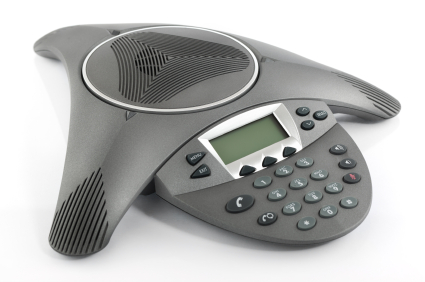10 Tips for a Successful Business Meeting
In the fast-paced world of business, effective communication and collaboration are often the linchpin of success. Meetings serve as critical forums for sharing ideas, making decisions, and charting the course for organizations. However, not all meetings are created equal, and the difference between a productive gathering and a time-wasting session often comes down to the approach taken. To ensure your business meetings yield positive outcomes, we present ten valuable tips that can transform the way you conduct them.
1. Setting Clear Objectives
The foundation of a successful business meeting lies in setting clear objectives. Before gathering your team, take the time to define the purpose and goals of the meeting. Ask yourself, “What do we hope to accomplish?” Whether it’s brainstorming ideas, reviewing progress, or making critical decisions, knowing the “why” behind the meeting is essential.
Equally important is ensuring that all participants understand the agenda. This involves sharing the meeting’s objectives and topics in advance, giving attendees the opportunity to prepare and contribute meaningfully.
2. Leveraging Transcription Services for Accurate Notes
In the modern business landscape, meticulous note-taking during meetings is critical. Accurate records of discussions, decisions, and action items help ensure that nothing falls through the cracks. Here’s where taurho-transcribes.co.uk, a reliable transcription service, can be your ally.
Using a transcription service seamlessly converts spoken words into written text. This not only eliminates the risk of missing crucial details but also provides a complete and searchable record of the meeting. Imagine having a well-organized transcript that can be easily referenced, searched, and shared among team members.
3. Inviting the Right Participants
The success of a business meeting often hinges on the selection of attendees. It’s essential to invite individuals whose presence aligns with the meeting’s objectives and agenda. Carefully consider who can contribute valuable insights and expertise, keeping the group size manageable to facilitate efficient discussions.
Diverse perspectives can be a catalyst for creative problem-solving. By including team members with different backgrounds, roles, and experiences, you can tap into a wealth of ideas and approaches.
4. Preparing a Detailed Agenda
A well-structured agenda is the roadmap that guides a meeting towards its intended destination. Take the time to prepare a detailed agenda that outlines the topics to be covered, the time allocated to each item, and the specific objectives for discussion. Distributing the agenda ahead of time allows participants to prepare adequately and come to the meeting with relevant information and insights. Encourage attendees to contribute agenda items if they have matters they’d like to discuss. This not only promotes inclusivity but also ensures that all relevant topics are addressed.
5. Time Management and Punctuality
Respecting participants’ time is a hallmark of successful business meetings. Start and end meetings on time, as scheduled. This not only demonstrates professionalism but also sends a clear message that you value your team’s time.
Allocating specific time slots for each agenda item is a proactive approach to time management. It enables you to manage discussions effectively, preventing any single topic from dominating the meeting. If a topic requires more time than allotted, consider scheduling a follow-up meeting to delve deeper into the issue while ensuring the current meeting stays on track.
6. Facilitating Engaged Discussions
The success of a business meeting depends on active and engaged participation from all attendees. As the meeting organizer or facilitator, it’s your responsibility to foster an environment where everyone feels comfortable sharing their thoughts and ideas.
Encourage active participation by inviting input from all attendees, not just the most vocal ones. Acknowledge and appreciate contributions to create a positive atmosphere. To promote open and respectful communication, establish ground rules for discussions, such as listening without interruption and addressing one point at a time.
7. Utilizing Visual Aids Effectively
Visual aids can be powerful tools for enhancing understanding and engagement during business meetings. However, their effectiveness depends on their careful and judicious use.
Incorporate visuals, such as slides or charts, when they can help clarify complex ideas or data. Use visuals to complement your verbal presentation rather than replacing it entirely. Visual aids should enhance, not overshadow, your message. Avoid overloading presentations with excessive visuals, as this can overwhelm participants and detract from the main points. Keep slides uncluttered and use clear, concise language.
8. Summarizing Key Points
Effective meetings should conclude with a summary of key points, decisions, and action items. This recap serves several important purposes. It reinforces what was accomplished during the meeting and provides a clear record of any decisions made. This ensures that participants leave with a shared understanding of what was achieved and what needs to happen next.
Summarizing key points clarifies individual responsibilities and deadlines. By clearly stating who is responsible for each action item and when it needs to be completed, you set the stage for accountability and progress.
9. Seeking Feedback and Continuous Improvement
Feedback is a valuable tool for improving the effectiveness of future business meetings. Encourage meeting participants to provide constructive feedback on various aspects of the meeting, such as its structure, content, and facilitation.
Create a culture of openness and receptivity to feedback. Make it clear that input is valued and that suggestions for improvement are welcome. Consider using anonymous feedback mechanisms, such as online surveys, to encourage candid responses.
10. Following Up on Action Items
The final step in ensuring the success of a business meeting is diligent follow-up. Holding team members accountable for their commitments is crucial to realizing the meeting’s objectives.
Delegate specific tasks to responsible individuals and set clear deadlines. Regularly monitor progress on these tasks and provide support or resources as needed. Encourage team members to communicate any challenges or roadblocks they encounter in fulfilling their responsibilities.
Conclusion
Effective business meetings are not just a matter of chance; they are the result of careful planning, skillful facilitation, and a commitment to continuous improvement. By setting clear objectives, taking accurate notes, inviting the right participants, preparing detailed agendas, and managing time effectively, you lay the foundation for productive gatherings. Remember that successful business meetings not only save time but also contribute to the achievement of organizational goals. By implementing these strategies, you can ensure that your meetings become valuable opportunities for progress, innovation, and shared understanding in your workplace.


 If organisation is not your strong point then planning a conference can be particularly tricky. You need to start off with a vision and then carefully implement steps along the way in order to reap success. The trouble is that a lot of people don’t know where to start and they struggle with direction. If only you had a step by step guide that could see you through. Well, now you do! Read on to make your conference planning a lot easier.
If organisation is not your strong point then planning a conference can be particularly tricky. You need to start off with a vision and then carefully implement steps along the way in order to reap success. The trouble is that a lot of people don’t know where to start and they struggle with direction. If only you had a step by step guide that could see you through. Well, now you do! Read on to make your conference planning a lot easier. Scheduling meetings becomes particularly difficult when they involve numerous or senior level attendees. That said, there are several rules of thumb when scheduling meetings that can help ensure on-time attendance by those individuals needed to achieve the meetings objectives.
Scheduling meetings becomes particularly difficult when they involve numerous or senior level attendees. That said, there are several rules of thumb when scheduling meetings that can help ensure on-time attendance by those individuals needed to achieve the meetings objectives.
 As meetings consume significant portions of every professional’s work life, it’s imperative they be conducted in as effective and efficient a manner as possible. The proper handling of meetings begins with their scheduling.
As meetings consume significant portions of every professional’s work life, it’s imperative they be conducted in as effective and efficient a manner as possible. The proper handling of meetings begins with their scheduling.
 Conference calls are integral to our way of conducting business. This type of meeting allows geographically separated individuals to readily share information as though they were at the same location. However, this audio-only form of communications presents several unique challenges. Consequently, we recommend several protocols to heighten the effectiveness of conference call communications.
Conference calls are integral to our way of conducting business. This type of meeting allows geographically separated individuals to readily share information as though they were at the same location. However, this audio-only form of communications presents several unique challenges. Consequently, we recommend several protocols to heighten the effectiveness of conference call communications.